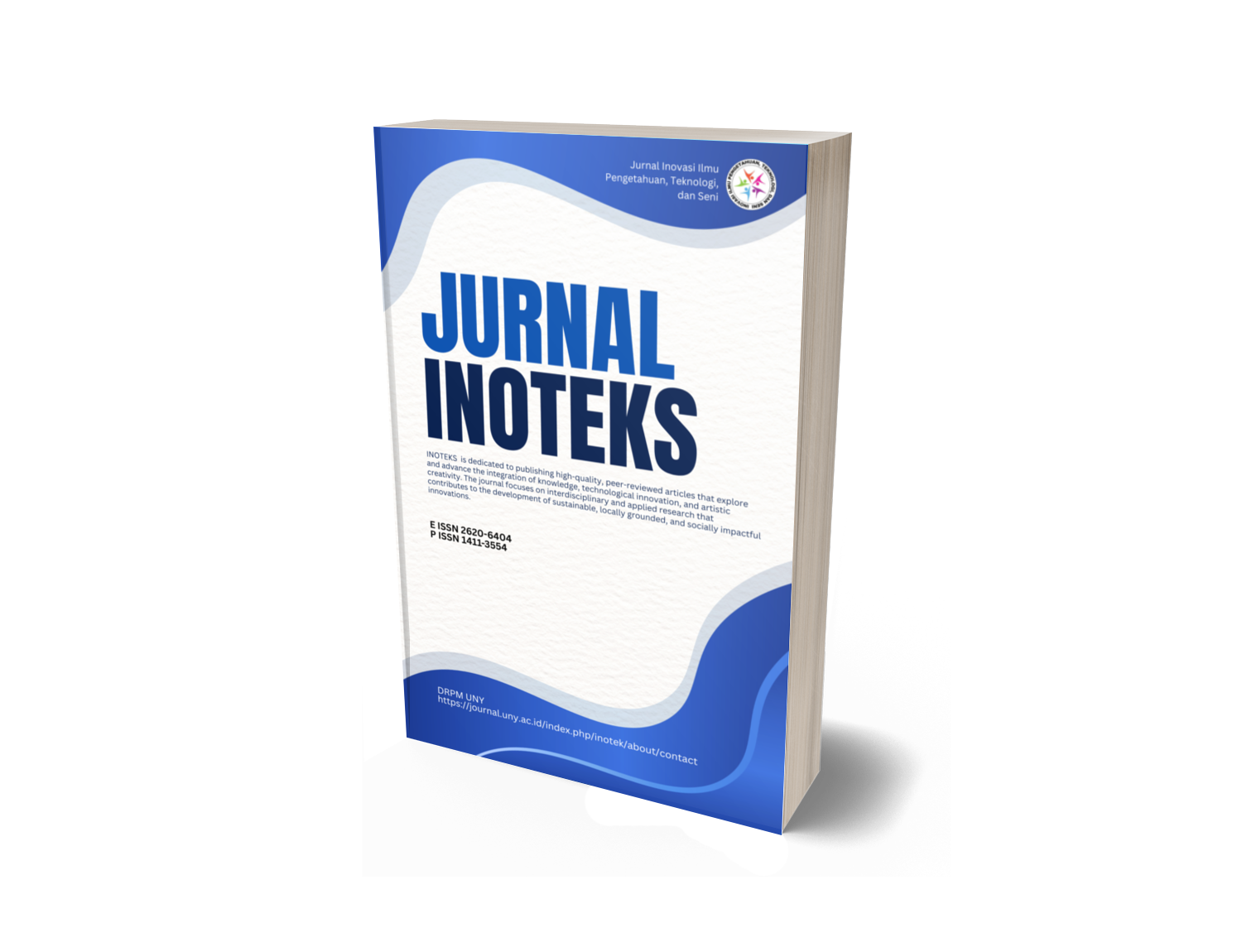REKAYASA MESIN PENGKABUT AIR (HUMIDIFIER CONTROL) UNTUK PENINGKATAN PRODUKSI BIBIT KLENGKENG PINGPONG
DOI:
https://doi.org/10.21831/ino.v15i1.2300Abstract
This research is aimed to disclose fogging machine application effectiveness for improving klengkeng pingpong seed production. The effectiveness of fogging machine may be measured based on the degree of the fogging machine usage success in klengkeng pingpong nursery process, whose degree of achievement shall be higher than nursery process conducted in natural manner.
The research result shows that the average degree of achievement in klengkeng pingpong nursery in way of seedling, top grafting, bridging or marcot, by using fogging machine is 79.26%. Meanwhile klengkeng pingpong nursery process in natural manner is approximately 40%. In return to this, it indicates that fogging machine usage on klengkeng pingpong nursery is deemed effective as it has exceeded successful level of natural klengkeng pingpong nursery. Thus, it may eventually be applied in improving klengkeng pingpong seed productionDownloads
Published
2014-09-18
How to Cite
Widata, S., Gunarso, G., Nugroho, F., & Herahli, A. (2014). REKAYASA MESIN PENGKABUT AIR (HUMIDIFIER CONTROL) UNTUK PENINGKATAN PRODUKSI BIBIT KLENGKENG PINGPONG. INOTEKS: Jurnal Inovasi Ilmu Pengetahuan,Teknologi, Dan Seni, 15(1). https://doi.org/10.21831/ino.v15i1.2300
Issue
Section
Articles
Citation Check
License
- Authors certify that the work reported here has not been published before and contains no materials the publication of which would violate any copyright or other personal or proprietary right of any person or entity.
- Authors transfer or license the copyright of publishing to Jurnal Civics: Media Kajian Kewarganegaraan to publish the article in any media format, to share, to disseminate, to index, and to maximize the impact of the article in any databases.
- Authors hereby agree to transfer a copyright for publishing to Jurnal Civics: Media Kajian Kewarganegaraanas a Publisher of the manuscript.
- Authors reserve the following:
- all proprietary rights other than copyright such as patent rights;
- the right to use all or part of this article in future works of our own such as in books and lectures;
- use for presentation in a meeting or conference and distributing copies to attendees;
- use for internal training by author's company;
- distribution to colleagues for their research use;
- use in a subsequent compilation of the author's works;
- inclusion in a thesis or dissertation;
- reuse of portions or extracts from the article in other works (with full acknowledgement of final article);
- preparation of derivative works (other than commercial purposes) (with full acknowledgement of final article); and
- voluntary posting on open web sites operated by author or author's institution for scholarly purposes, but it should follow the open access license of Creative Common CC BY-NC-SA License.









